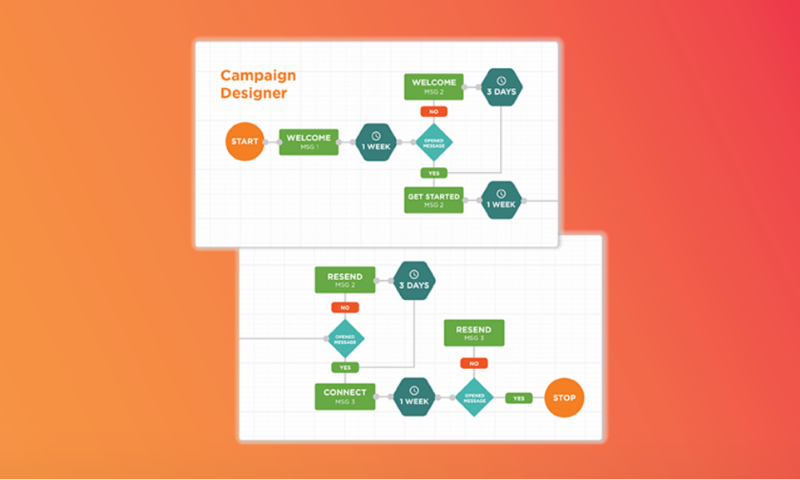
The Power of Marketing Automation
Trends to watch and best practices to get the results your association needs.
By Manon Audibert, Marketing Manager, Higher Logic
Marketing in the digital age is all about expectation vs. reality. Associations expect their online marketing tactics to resonate with new and existing members, grow revenue, and deliver value to stakeholders, the same way one might expect to create a fluffy, designer-worthy cake.
But in reality, without the time and resources necessary to meet those expectations, even well-intended marketers may see their efforts crumble, giving way to less-than-sweet results.
The good news is, marketing automation helps bridge the gap between expectation and reality, allowing teams of all sizes to get significantly closer to their goals than they could otherwise.
“In a perfect world, you’d love to really think through all of your email campaigns, including what you will promote and the idea flow,” said Beth Arritt, association evangelist at Higher Logic. “You want them to be cohesive, to tell a story—but you’re writing up against a deadline. Automation allows you to actually send the right messages at the right time.”
Think of it as a marketing superpower enabling you to trade time-consuming, error-prone tasks for more innovative, outcome-oriented endeavors.
Not sure automation is right for you? Look for signs that your current efforts aren’t cutting it. Red flags include the inability to make the member experience feel personal, low member and sponsor engagement, and overworked or understaffed marketing teams. The following marketing automation trends and best practices will help you remedy such issues.
The Latest Trends
Arritt told us many are reluctant to embrace marketing automation because they fear it will contribute to communication overload. In reality, the practice increases personalization and reduces extraneous communication. It isn’t just about providing end users with what they want—it’s also about filtering out what they don’t.
Consider this in the context of conference registration. “With automation, you can remove people who have already registered from your campaign so you’re not hammering them with irrelevant information,” Arritt said. “Nothing says I don’t know you at all like repeatedly asking members to sign up for something they registered for two months ago.”
If your association is leveraging some marketing automation but still not providing the most personalized member experience possible, the answer isn’t to move away from automation but to add more, especially considering the rapid nature of technological advancements.
“Technology is moving fast. And while associations are not used to that speed, members are,” she said. “They don’t want frustrations. They don’t want pages to load slowly, and they don’t want clunky mobile experiences.”
It’s even more crucial to keep up with these expectations as for-profit groups worm their way into association territory. “Associations talk about providing an Amazon-like member experience,” Arritt said. “We need to go one further with an Amazon-plus experience—we should know our members better than Amazon does.”
An automated approach to digital marketing also allows associations to mitigate damage due to the Great Resignation. Associations can’t go without marketing functionality in the face of turnover, but automated, evergreen campaigns keep efforts moving while associations search for new hires.
Best Practices
When it comes to making the most out of automation, Arritt’s first piece of advice is to boost authenticity by sending emails from an individual rather than an organization.
“Don’t have members reply to a general email address like ‘membership@association.org,'” she said. “Instead, add a personal touch by having replies directed to a person. That person could be seven different people over seven years, but the point is that members know they’re engaging with a human.”
Arritt said automation makes it possible to deliver the same personalized, tailored customer service as a brick-and-mortar retailer.
“My colleague came up with this analogy that I love: Say you’re working at the Gap and see someone looking at a sweater. You’re trained to ask if you can start a fitting room, help with sizing, and check for inventory,” Arritt said. “You can essentially automate the same personal experience through web tracking and engagement scoring, getting the right message to the right person when you know they’re interested.”
Another tip: Automate smaller programs that typically aren’t given as much attention as an annual conference or trade show.
“There are always programs where you think, ‘I really should promote that,’ but you’re too busy to focus on a low-priority task,'” Arritt said. “Automate almost all of those. Figure them out once, and then check on them two to three times a year, and you’re set.”
Finally, work with a provider that offers automation training and collaboration opportunities. For example, in her role at Higher Logic, Arritt works as a direct partner.
“Associations don’t want vendors; associations want partners,” she said. “On-demand training, strategy sessions, and an active user community set digital marketing partners apart from the rest.”
Ultimately, much like the right chef combined with the right ingredients makes an amazing cake, the combination of engagement tools like community and marketing automation and expert guidance becomes a potent force in aligning your association’s marketing expectations with the real-life experiences your members deserve.
Higher Logic Thrive is a member experience solution that provides a powerful but simple approach to community, marketing, and member engagement. For more information on how Higher Logic’s years of experience, research, and feedback can solve your challenges, visit thrive.higherlogic.com.
(Handout photo)





